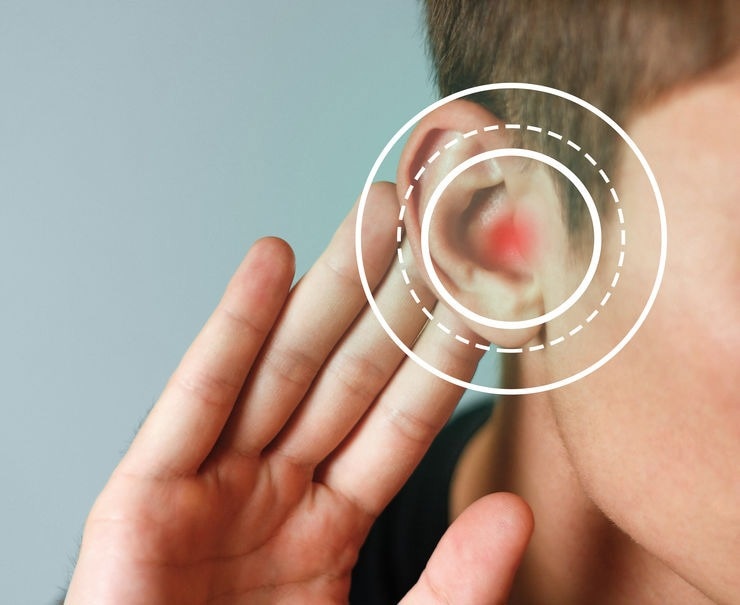A cochlear signal, the precise role of which has been uncertain since its discovery around 70 years ago, probably gives the brain information on whether the ear is working normally or not.
 Most people have experienced that their hearing is impaired and the ear feels numb after listening to loud sounds. Image Credit: Viktoriya Kuzmenkova.
Most people have experienced that their hearing is impaired and the ear feels numb after listening to loud sounds. Image Credit: Viktoriya Kuzmenkova.
New research offers an important piece of the puzzle in describing what occurs in the ear in hearing impairment caused by harmful noise and may help to diagnose noise-induced hearing injury in the long run.
Hearing can be temporarily impaired when the ear is exposed to loud sounds, such as at a concert or in a noisy environment. Repeated exposure to loud sounds may result in permanent hearing damage.
According to research, more than one billion young people are at risk of destroying their hearing by listening to loud music with headphones or in venues. However, while noise damage is a significant cause of hearing loss, the precise mechanism is still unknown.
One of the researchers looking into how these damages occur and whether they can be avoided is Pierre Hakizimana of Linköping University.
The inner ear, or cochlea, contains approximately 15,000 hair cells. When sound waves strike the hair cells, the vibrations are converted into electric nerve signals. These signals are sent to the brain, which deciphers them, and it is only after that that humans can hear sound.
The hair cell signal is divided into two parts: AC and DC. The AC signal has been extensively studied. It informs the brain about sound loudness and frequency, or how high or low the pitch is. However, the DC signal has remained a mystery. Investigators have been curious about its function since its discovery 70 years ago.
Elusive Signal
The DC signal is noticeable when assessing the electrical signals from the cochlea hair cells because it creates a slight shift in the AC signal in either a positive or a negative direction. Various studies attempting to characterize the DC signal have reached varying conclusions regarding its polarity.
In the latest research, Pierre Hakizimana demonstrates that when the cochlea is exposed to harmful noise, the polarity of the DC signal changes from positive to negative. In other words, the signal can provide information about ear health.
It seems like this signal could be a way for the body to inform the brain whether the ear is healthy or not, and in that way facilitate the brain’s ability to decode faint sounds. The brain can amplify a weak signal from the cochlea. If informed that the ear isn’t functioning normally, the brain doesn’t have to spend resources trying to improve the signal to decode sound from an injured ear.”
Pierre Hakizimana, Principal Research Engineer, Department of Biomedical and Clinical Sciences, Linköping University
This revelation should lead to more research into how the DC signal can be used to diagnose hearing loss caused by harmful noise. This problem has yet to be solved because no one knows how to interpret this signal or how to reliably isolate and measure it in humans.
Pierre Hakizimana’s research also demonstrates that the DC signal is generated by potassium ion channels releasing potassium ions through hair cell membranes.
Source:
Journal reference:
Hakizimana, P. (2023). The summating potential polarity encodes the ear health condition. Cellular and Molecular Life Sciences. doi.org/10.1007/s00018-023-04809-5.